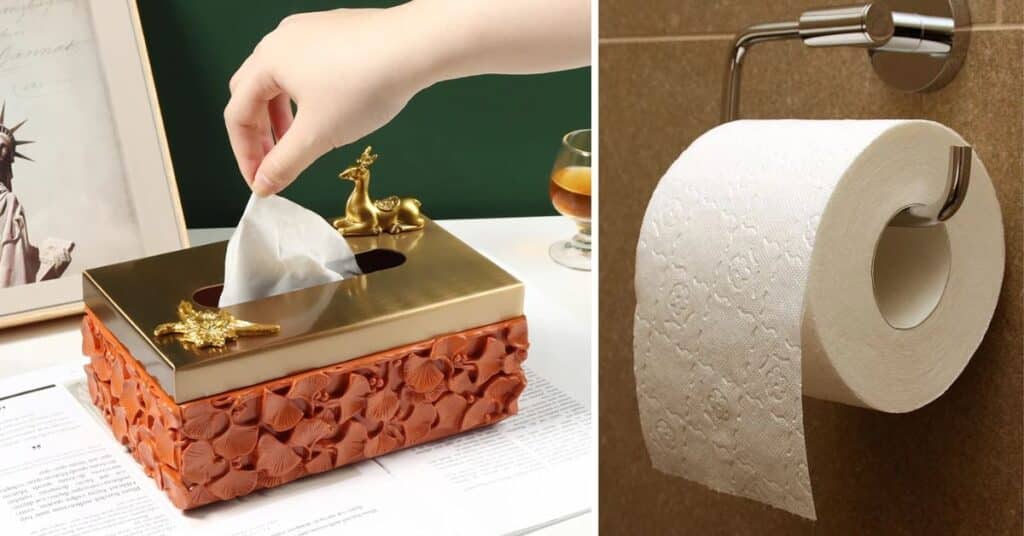Toilet paper and facial tissues serve different purposes. This paper is designed for bathroom use, while facial tissues are softer and gentler on the skin for facial care.
It’s rough and dissolves quickly in water, meant for flushing after use. Facial tissues, however, are made from softer materials and are designed to be gentle on sensitive facial skin.
Using it on the face can lead to irritation, dryness, and allergic reactions due to its rough texture and lack of moisturizing agents.
Is It Safe To Use Toilet Paper Instead Of Facial Tissue

Using toilet paper for your face might not be safe. It is rough and can cause irritation. Facial tissues are softer and gentler on the skin. It’s best to use facial tissues for your face.
Difference in Material Composition
Toilet paper is crafted from wood pulp or recycled paper, then bleached for a smoother texture. Its primary function is swift dissolving post-bathroom use.
Its rough texture and minimal strength deem it unfit for facial cleansing. Facial tissues, in contrast, originate from virgin pulp or cotton, infused with softeners for a gentle touch.
These are designed for various facial tasks like wiping tears or removing makeup. Notably, their softness and superior strength make them ideal for facial use.
Things you need to know
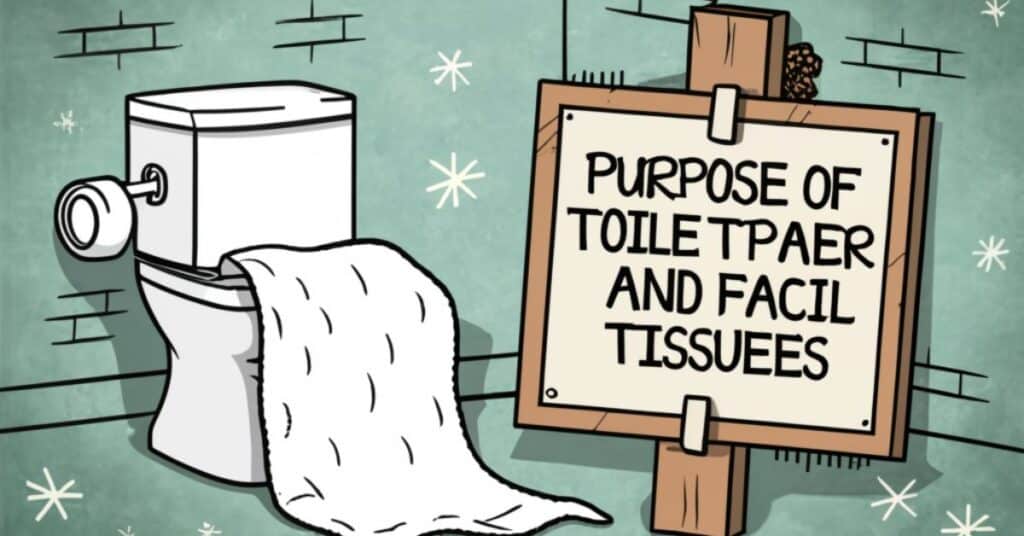
The differences between toilet paper and facial tissues helps make informed choices for hygiene and skincare.
Purpose of Toilet Paper and Facial Tissues
Understand the distinct functions of it and facial tissues to avoid misuse and ensure optimal hygiene practices.
Material Composition Differences
Recognize the varying materials used in it and facial tissues, including wood pulp, recycled paper, cotton, and softening agents, influencing their suitability for different tasks.
Health Considerations

Learn about potential skin irritations and health implications associated with using it on the face, highlighting the importance of choosing the right product for facial care.
Environmental Impact
Explore the environmental footprint of both it and facial tissues, including resource consumption, waste generation, and recycling considerations, to make informed eco-friendly choices.
Economic Factors
Consider the cost-effectiveness of using facial tissues versus for facial tasks, taking into account potential long-term expenses related to health issues or plumbing problems.
The Common Misconception
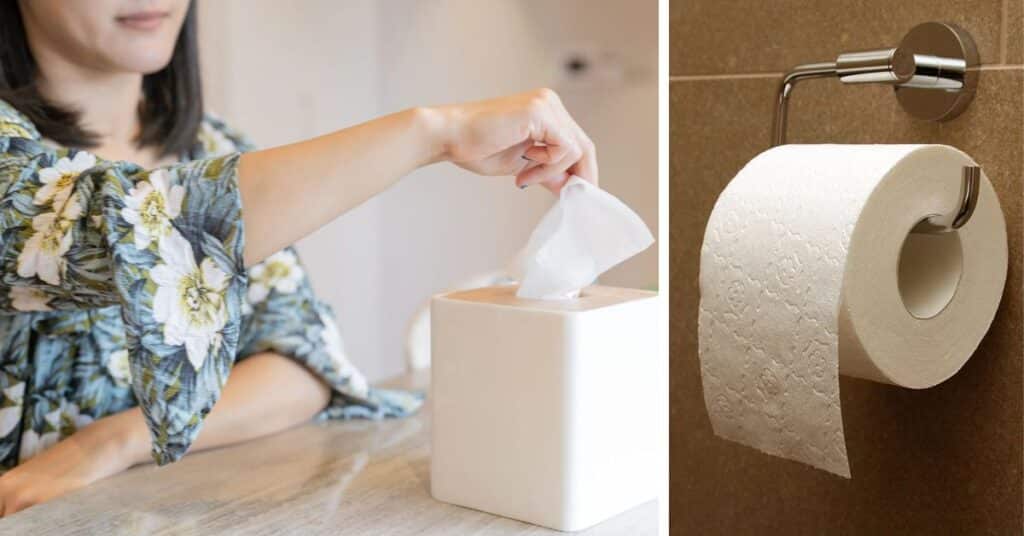
The common misconception revolves around the interchangeability of it and facial tissues. Many people believe they can use for facial tasks without considering the differences in material composition and intended purposes.
This misconception can lead to skin irritation and discomfort due to toilet paper’s rough texture and lack of softening agents. It’s essential to educate individuals about the distinct purposes of it and facial tissues. While it is designed for bathroom use to clean up after using the toilet.
Facial tissues are specifically crafted for tasks like blowing the nose, wiping tears, or removing makeup. Understanding these differences can help prevent potential health issues and ensure proper hygiene practices.
Read This Blog: WHY PAPER TOWELS ARE MORE ABSORBENT
Key Differences
The key differences between it and facial tissues lie in their intended uses, material compositions, and physical properties.
Intended Uses
Manufacturers primarily design it for cleaning up after using the bathroom, while they specifically craft facial tissues for facial tasks such as blowing the nose, wiping tears, or removing makeup.
Physical Properties
It has a rough texture and low strength, intended for quick dissolution in water to avoid pipe clogs. On the other hand, facial tissues boast a soft texture and high strength, providing comfort and durability for facial use.
Potential Health Implications
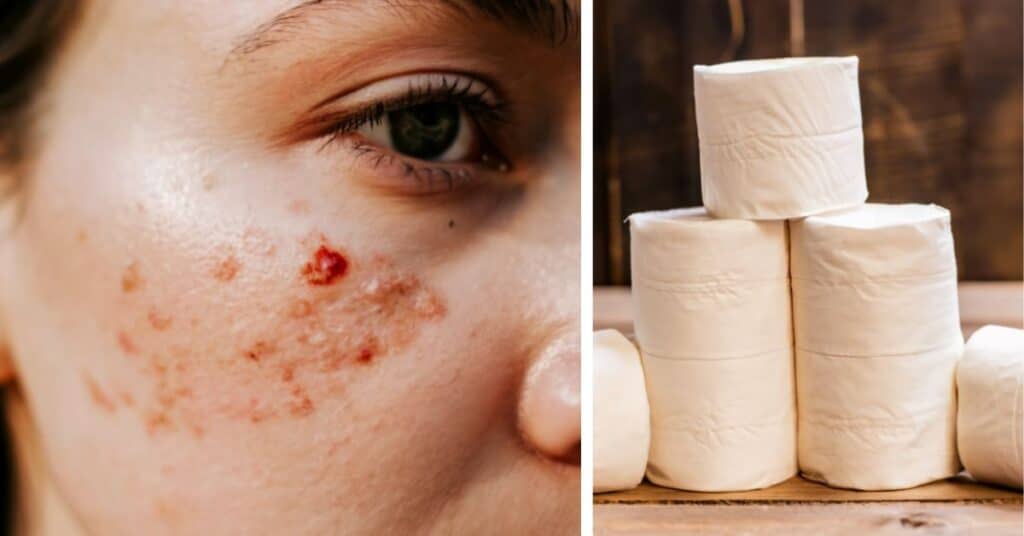
Using it instead of facial tissues can potentially lead to various health implications due to the differences in their material composition and intended uses.
Skin Irritation
Toilet paper’s rough texture and lack of softeners may cause skin irritation, especially on sensitive facial skin, leading to discomfort and redness.
Dryness
The absence of moisturizers in it can result in dryness, exacerbating existing skin conditions and making the skin more prone to irritation and cracking.
Allergic Reactions
It may contain traces of chemicals or dyes used in the bleaching process, increasing the risk of allergic reactions or dermatitis in individuals with sensitive skin.
Hygiene Concerns

Storing it in the bathroom exposes it to germs and bacteria, potentially transferring pathogens to the face and increasing the risk of infections.
Long-Term Effects
Continued use of it for facial tasks may lead to chronic skin issues, necessitating medical intervention and potentially impacting overall skin health.
Microbial Contamination
Due to its storage in bathrooms, toilet paper can harbor bacteria and other microorganisms, increasing the risk of introducing harmful pathogens to the face and potentially causing infections or skin issues.
Lack of Moisturization
Toilet paper does not contain moisturizers or softeners that are often present in facial tissues. This lack of moisturization can lead to dryness and discomfort, particularly in individuals with sensitive or dry skin, exacerbating existing skin conditions.
Environmental Considerations

Environmental considerations play a crucial role in choosing between toilet paper and facial tissues.
Resource Consumption
Toilet paper production typically involves significant resource consumption, including water, energy, and wood pulp.
Conversely, facial tissues made from virgin pulp or cotton also require substantial resources but may have a lower environmental impact compared to toilet paper due to their intended use for facial tasks.
Waste Generation
Improper disposal of both toilet paper and facial tissues can contribute to waste generation and environmental pollution.
While toilet paper dissolves quickly in water, excessive flushing can cause pipe clogs and sewage system issues. Similarly, facial tissues, if not disposed of properly, can contribute to landfill waste and environmental degradation.
Addressing these environmental considerations involves adopting sustainable practices such as reducing overall paper consumption, opting for recycled or eco-friendly alternatives, and ensuring proper disposal methods to minimize environmental impact.
Raising awareness about the environmental consequences of using disposable paper products can encourage individuals to make more environmentally conscious choices in their daily lives.
Economical Aspects
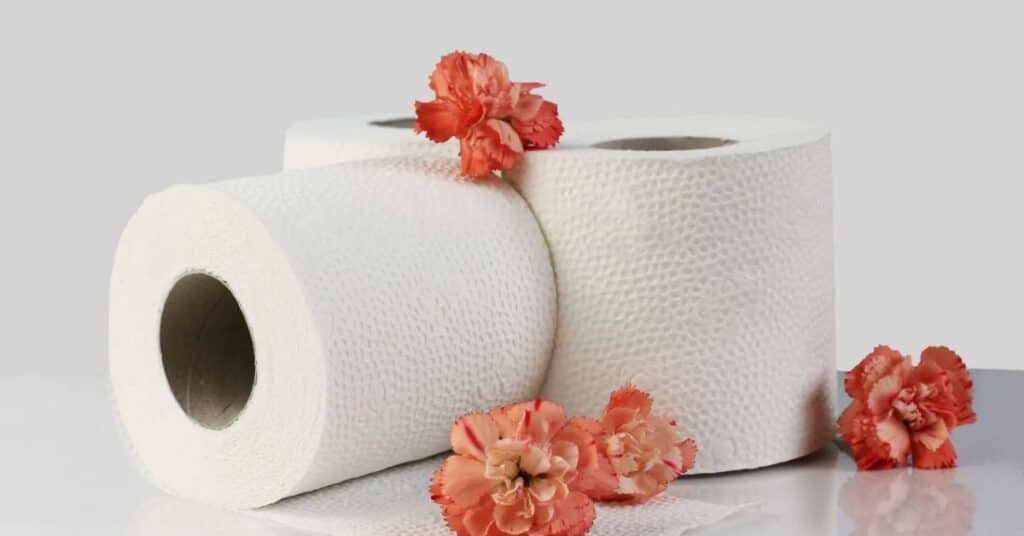
Using toilet paper for facial tasks may lead to increased medical bills and plumbing expenses. Investing in facial tissues can prevent long-term costs.
Cost Comparison
While facial tissue may appear more expensive upfront, it’s important to consider the long-term financial implications of using toilet paper for facial tasks.
Healthcare Costs
Using toilet paper as facial tissue can result in increased medical expenses due to potential skin issues or infections.
Plumbing Expenses
Excessive use of toilet paper for facial tasks can lead to plumbing problems, resulting in higher bills for repairs or maintenance.
Environmental Impact
Furthermore, using toilet paper for facial tasks contributes to environmental pollution and resource depletion, which can have negative economic effects on society.
Not as much safe to use in whipping eyes

Using toilet paper for wiping the eyes may not be as safe as using facial tissues. Toilet paper’s rough texture and lack of softening agents can potentially cause irritation or discomfort to the delicate skin around the eyes.
Toilet paper may not be as gentle as facial tissues, increasing the risk of scratching or damaging the eyes. Therefore, it is advisable to use facial tissues specifically designed for facial tasks, such as wiping tears or removing makeup, to ensure safety and comfort when dealing with sensitive areas like the eyes.
Frequently Asked Question
Can I flush facial tissues down the toilet?
No, facial tissues lack the quick dissolving properties of toilet paper and may cause plumbing issues if flushed.
Is it safe to use toilet paper instead of facial tissues?
While it’s possible, toilet paper may be rough on the skin and lack moisturizing properties, potentially causing irritation.
What should I do if I run out of facial tissues?
In a pinch, you can use toilet paper, but it’s best to replenish your supply of facial tissues for gentler use on the skin.
Are facial tissues more expensive than toilet paper?
Facial tissues may have a slightly higher upfront cost, but considering potential health and skin benefits, they can be worth the investment.
Can I recycle used facial tissues?
No, used facial tissues are typically not recyclable due to their contact with germs and contaminants. Dispose of them in the trash.
Final Thought’s
Using facial tissues for facial tasks is a gentle and hygienic choice. While this product may seem convenient, it can be rough on the skin and lacks moisturizing properties.
Prioritizing skincare and hygiene by opting for facial tissues ensures comfort and cleanliness. Remember to stock up on facial tissues for a softer and safer experience.

